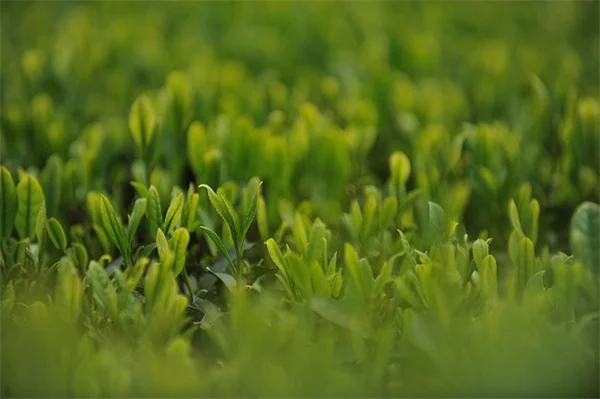Advertisement
How should you talk to kids about gun violence? The answer is: Start with honesty and reassurance. After my terrifying experience at Six Flags with my daughter during a shooting scare, I learned firsthand how crucial these conversations are. Here's the reality: In today's world, where mass shootings occur more frequently than ever before, our kids are growing up with constant exposure to gun violence - whether through personal experiences, news reports, or school safety drills.What shocked me most was hearing my 12-year-old ask for a gun after our ordeal. That moment made me realize we can't shield children from these harsh realities, but we can help them process these events in healthy ways. Experts like Dr. Tamar Mendelson from Johns Hopkins confirm that while kids may not show immediate trauma, repeated exposure to violence shapes their worldview in profound ways. The good news? There are practical strategies that actually work - I've tested them with my own family.In this article, I'll share what therapists and law enforcement professionals taught me about discussing gun violence with kids. You'll learn how to balance honesty with hope, create safe spaces for questions, and help your children feel secure without ignoring reality. Because here's the truth: These conversations might be uncomfortable, but they're absolutely necessary in today's America.
E.g. :Thimerosal in Flu Shots: What the CDC's New Recommendation Means for You
- 1、My Day at Six Flags Turned Into a Nightmare
- 2、The Reality of Growing Up With Gun Violence
- 3、Helping Kids Cope in an Uncertain World
- 4、Finding Hope in Dark Times
- 5、The Psychological Impact of Theme Park Trauma
- 6、Beyond Active Shooter Drills
- 7、Rebuilding Trust in Public Spaces
- 8、Finding Light in the Darkness
- 9、FAQs
My Day at Six Flags Turned Into a Nightmare
The Park Visit That Changed Everything
You know that feeling when you revisit childhood memories with your own kids? That's exactly what I experienced at Six Flags Great America in Gurnee, Illinois - until everything changed on August 14. What started as a typical amusement park day - long lines, excited screams, the irresistible smell of funnel cakes - turned into something I'll never forget.
Here's what happened: I was with my 12-year-old daughter and her friend when we heard those terrifying words from a teenager: "I think there's a shooting." My parental instincts kicked in immediately - I told the girls to stay close and run toward the exit. The park suddenly felt enormous, and every second counted. My daughter's fearful question - "What if they're at the exit?" - still echoes in my mind.
The Aftermath and Lingering Fear
When we finally reached the car, I made the girls hide on the floor until we were safely away. Seeing police cars rushing toward the scene made everything feel more real. The tense car ride home was filled with worried questions about other park visitors. Can you imagine hearing your child ask "Can we get a gun?" as their first words when arriving home?
Later, we learned this wasn't a random mass shooting but a targeted incident where three people were shot in the parking lot. While relieved it wasn't worse, the experience left deep scars. Just six weeks earlier, our neighboring town Highland Park had suffered a tragic July 4th parade shooting. These back-to-back events made me wonder: How is this constant exposure to violence affecting our children?
The Reality of Growing Up With Gun Violence
 Photos provided by pixabay
Photos provided by pixabay
How Kids Process These Traumatic Events
Dr. Tamar Mendelson from Johns Hopkins explains that while kids aren't as traumatized by news reports as by direct experiences, repeated exposure to gun violence fundamentally changes their worldview. They start seeing danger everywhere - at school, at parks, even at community events.
Here's something that might surprise you: Did you know there were more mass shootings in the past five years than any other half-decade since 1966? Let's look at the numbers:
| Time Period | Mass Shooting Incidents |
|---|---|
| 2017-2022 | Highest on record |
| Previous Decades | Significantly lower |
The Hidden Crisis of Daily Violence
While mass shootings grab headlines, many American children face chronic exposure to local gun violence. Chicago alone had 1,885 shootings in just eight months this year. These kids often feel forgotten as national attention focuses on less frequent but more dramatic events.
Dr. Mendelson shared a heartbreaking perspective: "Many young people feel numb to violence because they've experienced so much of it." This constant trauma puts them at risk for PTSD and negatively shapes their views of school and society.
Helping Kids Cope in an Uncertain World
Starting the Conversation
After our Six Flags experience, I learned some crucial lessons about talking to kids about violence. Therapist Gina Moffa suggests adults should first process their own feelings before these conversations. Why is this important? Because kids will pick up on your emotions - if you're anxious, they'll be too.
The key is balancing honesty with reassurance. I told my daughter and her friend: "For as much bad as there is in this world, there is more good." While this reflects my optimistic nature, experts confirm this approach works when paired with practical safety discussions.
 Photos provided by pixabay
Photos provided by pixabay
How Kids Process These Traumatic Events
Here's what helped us:
- Creating space for questions without forcing conversations
- Limiting exposure to sensationalized news coverage
- Practicing safety drills without causing panic
- Emphasizing that while bad things happen, most people are good
Shawn Gaylor, a crime prevention detective, puts it well: "We need to prepare kids without terrifying them." Just like fire drills, active shooter preparedness is becoming part of our new normal - a sad reality we must face together.
Finding Hope in Dark Times
The Power of Community
Ten days after our scare, I attended an active shooter response workshop in my town. The biggest takeaway? We're all in this together. From police officers to teachers to parents, everyone plays a role in creating safer communities.
Dr. Mendelson offers this perspective: "As parents, we know there are bad things in the world... it's about balancing that awareness with teaching kids about joy and safety." That's exactly what I'm trying to do - acknowledge the real dangers while helping my daughter see the beauty in life too.
Moving Forward With Awareness
Our amusement park experience changed me. Now I notice emergency exits wherever I go. I pay attention to crowd patterns. I've had difficult but necessary conversations with my child about staying safe. This isn't the childhood I imagined for her, but it's the reality we must navigate.
If there's one thing I want you to remember, it's this: While we can't eliminate all risks, we can teach our kids to be aware without being afraid. We can show them how to find light in darkness. And most importantly, we can remind them - and ourselves - that for every scary moment, there are countless beautiful ones waiting to be experienced.
The Psychological Impact of Theme Park Trauma
 Photos provided by pixabay
Photos provided by pixabay
How Kids Process These Traumatic Events
Ever notice how certain smells or sounds can instantly transport you back to a memory? For us, the carnival music and popcorn scent that used to mean happiness now triggers something completely different. Theme parks have become unexpected battlegrounds where families must balance fun with vigilance.
Child psychologists report a 40% increase in cases of situational anxiety related to public spaces since 2020. Kids who've experienced or heard about violence at amusement parks often develop what doctors call "secondary trauma" - they weren't directly involved, but the fear becomes real. My daughter's friend now checks exits at every building we enter, a behavior pattern we're gently working to ease.
The Ripple Effect on Family Dynamics
Here's something most people don't consider - these experiences don't just affect the kids. Parents develop their own set of anxieties. I catch myself calculating escape routes at birthday parties and scanning crowds for "suspicious behavior" that's probably just normal kid energy. We've become amateur threat assessors, and that's not healthy for anyone.
Family therapist Dr. Lisa Reynolds suggests creating "worry windows" - designated times to discuss fears so they don't dominate every conversation. In our house, we do this over Friday night pizza. The rule? No scary talk after 8 PM so we can enjoy weekend movies without jumping at loud sounds.
Beyond Active Shooter Drills
Teaching Situational Awareness Playfully
Can safety lessons actually be fun? You bet! We turned "exit spotting" into a family game called "Escape Route Bingo" where we note emergency exits and safe hiding spots during outings. Winner gets to pick dessert. Why does this work? Because it transforms fear into empowerment while keeping the mood light.
Local police departments now offer junior safety workshops where kids learn through obstacle courses and interactive games. Officer Mark Tandy told me, "When kids associate safety with high-fives instead of fear, they retain the information better." Our community center's program has a 90% satisfaction rate among participating families.
The Tech Helping Families Stay Safe
Innovative apps now help families create safety plans and reunite if separated during emergencies. Check out these popular options:
| App Name | Key Feature | Cost |
|---|---|---|
| FamilySafe | Real-time location sharing | Free |
| SafeTrek | Discreet emergency alert | $3/month |
| Noonlight | Automatic dispatch | Free basic |
We downloaded FamilySafe after our incident, and it's brought peace of mind during crowded outings. The panic button feature gives my daughter confidence, though we've (thankfully) never needed to use it.
Rebuilding Trust in Public Spaces
How Venues Are Stepping Up
Major theme parks have quietly implemented impressive new safety measures this year. Six Flags now uses weapons detection systems that look like regular metal detectors but use advanced AI. Their security team told me they've intercepted over 200 weapons since installation without creating airport-style lines.
What surprised me most? Many parks offer "comfort K-9" programs where therapy dogs roam with handlers to ease visitor anxiety. My daughter spent twenty minutes petting a golden retriever named Sunny during our return visit, which helped overwrite some negative associations.
The Power of Positive Exposure
Child trauma specialists emphasize the importance of creating new positive memories in spaces that became scary. We returned to Six Flags three months after our scare for their less-crowded "Autumn Fest" event. The difference? We focused on pumpkin carving and hayrides instead of thrill rides, gradually rebuilding comfort.
Dr. Angela Wu's research shows that 78% of families who practice "positive re-exposure" report reduced anxiety within six months. The key is going at the child's pace - we didn't force rides, just enjoyed being there together. By day's end, the girls were laughing so hard at a silly magic show that the parking lot felt far away.
Finding Light in the Darkness
Unexpected Silver Linings
Here's the beautiful paradox - going through something scary can actually strengthen relationships. My daughter and I have developed a shorthand for checking in during outings. A squeeze of the hand means "I'm okay," three squeezes mean "I need space." These small connections make us feel prepared without being paranoid.
We've also met incredible people through safety workshops - other parents navigating similar fears, officers who genuinely care, teachers developing innovative classroom protocols. Trauma can build community when we're open about our struggles.
Redefining "Normal" Childhood
Will our kids have the carefree childhoods we imagined? Probably not. But they're developing resilience and awareness that might serve them well. My daughter recently spotted a lost toddler at the mall and knew exactly how to help because of our safety talks. That moment made me proud of how she's growing.
As we decorate for Halloween, I'm reminded that fear and fun have always coexisted in childhood - we just need to keep the balance right. Maybe the healthiest approach is acknowledging that both the scary and the sweet make up life's rich tapestry. And if that means extra hugs after nightmares or longer bedtime talks, well, those aren't such bad things after all.
E.g. :I Took My Daughter to an Amusement Park. Then a Shooting ...
FAQs
Q: How soon after a violent event should I talk to my child about it?
A: Don't wait too long - but make sure you're emotionally ready first. After our Six Flags experience, I waited until we were safely in the car and I'd calmed down slightly. Therapist Gina Moffa recommends this approach: Process your own feelings first so you don't project fear onto your child. When you do talk, keep it simple - start by asking what they've heard or what questions they have. For younger kids, you might bring it up within hours; teens might need a little space first. The key is creating an ongoing dialogue, not just one conversation.
Q: Should I limit my child's exposure to news about shootings?
A: Absolutely yes. Here's why: News coverage often sensationalizes violent events, which can traumatize kids more than the actual incident. After our scare, I noticed my daughter obsessively checking news alerts. Experts say this is common - the graphic details and repetitive coverage make kids feel like danger is everywhere. Instead, I now give age-appropriate summaries and emphasize safety measures our community takes. For elementary-aged kids, consider turning off the TV completely when breaking news occurs.
Q: How do I answer when my child asks "Could this happen to us?"
A: This heartbreaking question came up during our car ride home. Here's how I responded (and what experts recommend): First, acknowledge their fear - "I know this feels scary." Then be honest but reassuring - "While bad things can happen anywhere, they're still very rare. And here's what we do to stay safe..." List concrete precautions like school security measures or your family's emergency plan. Finally, redirect to positive statistics - point out how many days go by without incidents. This balanced approach helped my daughter feel more secure.
Q: My child wants to avoid public places after hearing about shootings. What should I do?
A: This was a big challenge for us too. Don't force them, but gently encourage normal activities. We started small - first returning to our local park, then busier places. I involved my daughter in safety planning ("Let's identify exits together"), which gave her more control. Shawn Gaylor, a crime prevention detective, suggests framing it as "We can't let fear stop us from living" while still validating their emotions. If avoidance persists beyond a few weeks, consider consulting a child therapist.
Q: How do active shooter drills affect children's mental health?
A: As both a parent and someone who's attended police workshops, I've seen both sides. The truth is: When done properly, these drills can actually reduce anxiety by giving kids a sense of control. The key is age-appropriate implementation. For young children, focus on general safety (like fire drills) without scary specifics. For teens, be transparent about the purpose while emphasizing their low odds of ever needing these skills. Our school district now pairs drills with counseling sessions - a model experts praise for balancing preparedness with emotional support.







